Urban places and spaces should be accessible for all, says UWE Bristol student

Emily Annakin, a 23-year-old UWE Bristol Architecture and Planning student, is hoping to land her dream job this summer, using her own experience of visual impairment to design more inclusive urban spaces.
Emily’s journey into architecture began at school, with a love for art and a knack for maths. Encouraged by her parents and teachers, she decided to pursue a career in architecture. However, at 17-years-old she was diagnosed with Stargardt disease, a form of juvenile macular degeneration which means she has no central vision.
With sheer determination and despite a rapid deterioration of her sight in the last four years, Emily is preparing to exhibit her final degree project at the university’s Showcase. The exhibition marks the end of five years of study for Emily, who completed a Foundation year at UWE Bristol, before embarking on the four-year dual Architecture and Planning degree.
Opening to the public on Thursday 6 June, visitors will be able to view her redesign of an area of Bristol Harbourside, featuring a climate change institute to combat food insecurity. As well as creating a community-centred sustainable space, her own experiences have informed her designs which provide a more welcoming urban environment based on all the senses.
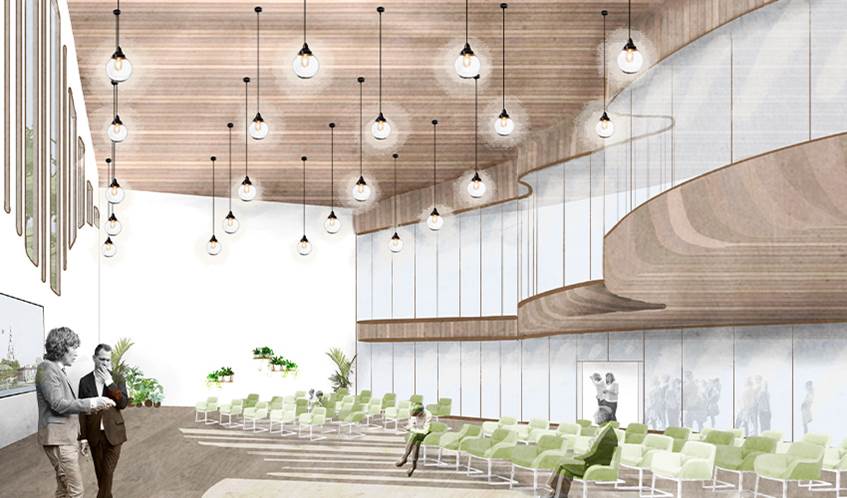
She said: “Being blind has given me a different perspective on how people interact with their environment, and I want to use that to create a more inclusive and accessible urban space.
“Everyone experiences space differently, whether you have a visual impairment or physical impairment, whether you’re neurodivergent, living with dementia, male, female, young or old. In design there’s so much focus on creating something visually pleasing but input from people who experience the world in a different way is critical to creating much more inviting places for all.”
Throughout her studies, Emily has had to adapt to accommodate her visual impairment, using technology like an iPad and Apple Pencil to create detailed designs. Her innovative approach and exceptional spatial awareness have earned her praise from the university’s joint Programme Leaders Elahe Karimnia and Allison Dutoit. Elahe said: “As Emily’s tutor during the last year, I’ve learned how inclusiveness is achieved in the journey and process of designing places, not only for people with additional needs but by them. Having the experience in planning and architecture means Emily has a broader awareness of the wider process of shaping the built environment and provides strong grounding for a career in urban design.”
With her graduation just around the corner and job hunting underway, Emily is reflecting on what she has achieved but acknowledges the challenges she has faced.
She said: “It’s not been easy. I’ve had to change my approach to drawing and designing year-on-year, as my eyesight deteriorated. When I started my foundation course at UWE Bristol in 2019, I was able to draw with pencil and paper, but I’m now fully digital with the iPad enabling me to zoom in to focus on a small area at a time.
“I really didn’t know if I would get this far with my degree, but I’ve submitted my final project despite my changing vision being extremely stressful. I’m quite proud of what I’ve achieved.
“I’ve learned to cope with the additional stress, and the support of my course tutors has been key. I’ve found alternative ways of working while adapting to the change in my vision. Nonetheless I have completed a full final portfolio, presented with drawn, written, and spoken assessment.
“Sheer determination is what’s got me through. That, and a desire to produce good work and to make a difference in the world, if I can.”
With Emily’s attention now turning to securing a job in urban design, with a focus on accessibility, she’s keen that potential employees don’t make assumptions about her ability to work in a creative and technical industry.
Allison added: “We hope Emily’s accomplishment in completing this extraordinary dual degree inspires future students who would have avoided stepping in the world of urban and architectural design due to any perceived limitations. Accommodating Emily’s needs showcases the possibilities for us in the university to transform architecture and design pedagogy by diverse needs and capabilities. Our professions would gain from being more open to many. The places we make can only really reflect and invite everyone if we -- the designers -- embody and reflect everyone.”
Showcase, UWE Bristol’s degree show, features work from the university’s graduating students from the College of Arts, Technology and Environment. More than 1200 students from over 40 courses will exhibit their work at Bower Ashton, Arnolfini, Spike Island and the university’s Frenchay Campus from Thursday 6 June until Wednesday 12 June. More information is available on the university’s website.
Related news
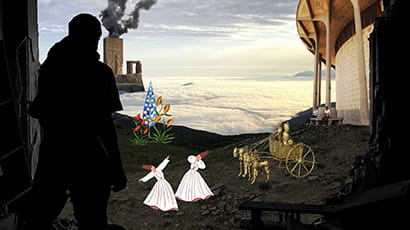
26 August 2025
UWE Bristol MA students present Showcase at Spike Island
Students from MA Fine Art, MA Graphic Arts, and MA Multi-Disciplinary Printmaking will exhibit their work at the Showcase MA Degree Show, from 4 September.
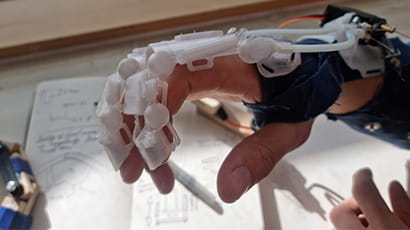
30 May 2025
UWE Bristol student develops exoskeletal bionic glove to aid stroke recovery
A product design student from Iron Acton will unveil a prototype bionic glove to aid stroke rehab, during UWE Bristol’s annual Showcase starting on 5 June.

21 May 2025
Students reveal creative responses to real-world experiences at UWE Bristol Showcase
UWE Bristol’s Showcase, celebrating student creativity and innovation across the College of Arts, Technology and Environment, returns this June.
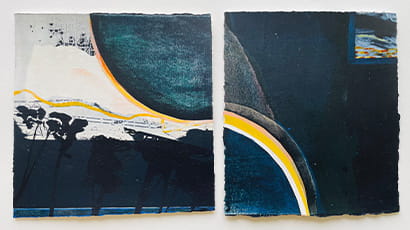
20 August 2024
UWE Bristol art and design students explore diverse global issues at MA Degree Show
UWE Bristol’s Showcase: MA Degree Show returns to Spike Island on 5 September, featuring the extraordinary artwork of around 50 graduating students.
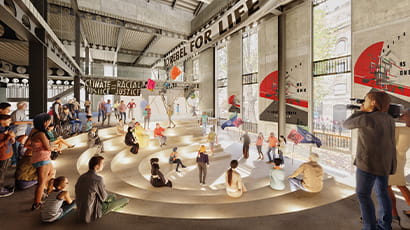
07 May 2024
Graduating students gear up to present their work at annual Showcase
UWE Bristol's Showcase offers visitors the chance to discover a new generation of talent from the College of Arts, Technology and Environment.

30 August 2023
Emerging talent exhibited during MA Showcase
Students studying MA Design, MA Graphic Arts and MA Multi-Disciplinary Printmaking will exhibit their work at a special Showcase this month.

01 June 2023
Degree Show beckons for UWE Bristol students
An annual end of year celebration of work by students at the University of the West of England (UWE Bristol) takes place next week (8-15 June).

28 April 2023
UWE Bristol graduates to unveil work at annual degree show
The exceptional talent of graduating students at the University of the West of England (UWE Bristol) will be celebrated at the annual Degree Show this June.
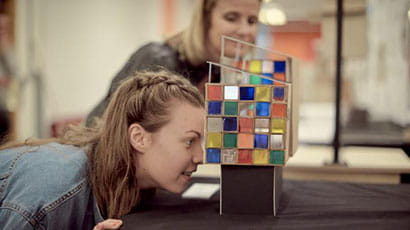
30 May 2022
UWE Bristol graduates unveil work at degree shows
Emerging talent from UWE Bristol will exhibit at the graduate degree shows for the Creative Industries and Faculty of Environment and Technology this June.
You may also be interested in

Media enquiries
Enquiries related to news releases and press and contacts for the media team.

Find an expert
Media contacts are invited to check out the vast range of subjects where UWE Bristol can offer up expert commentary.






